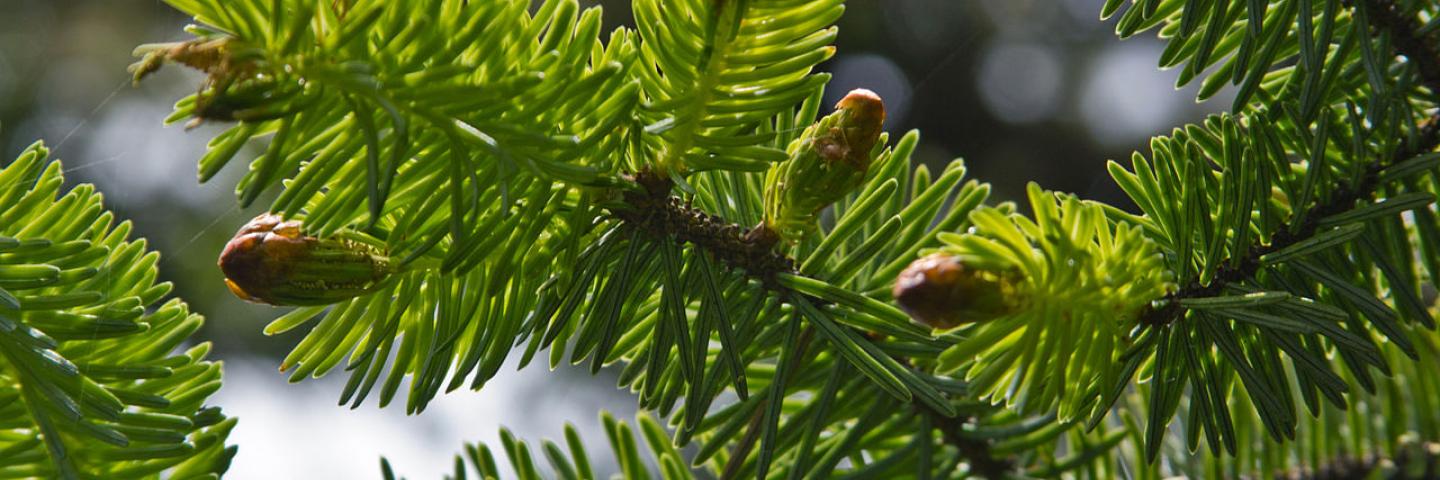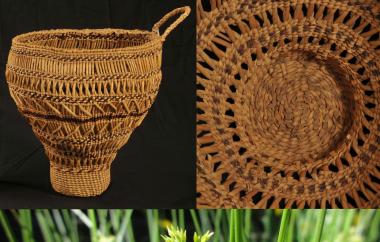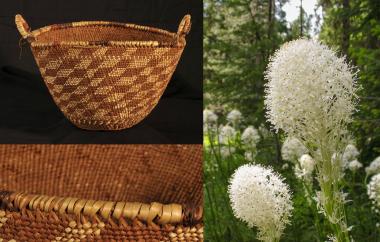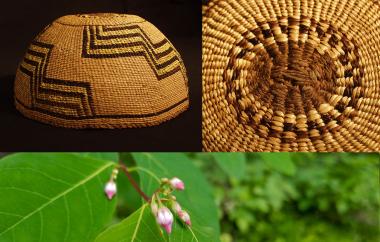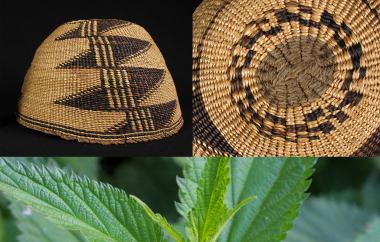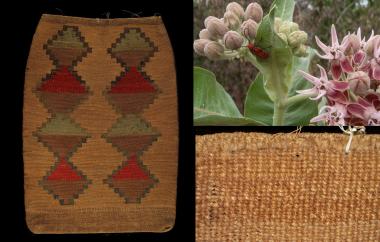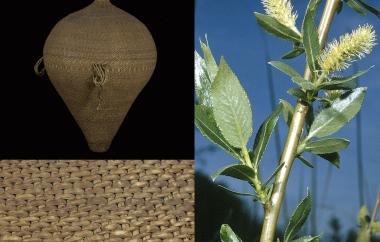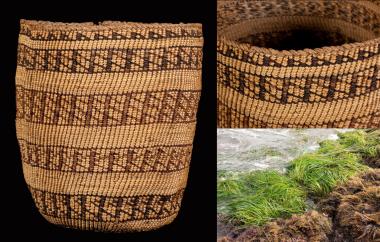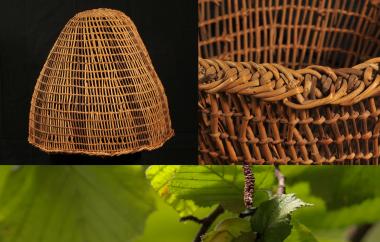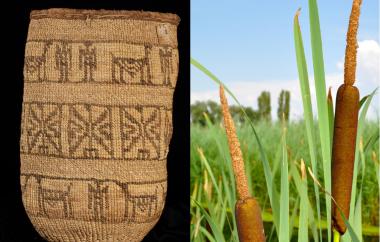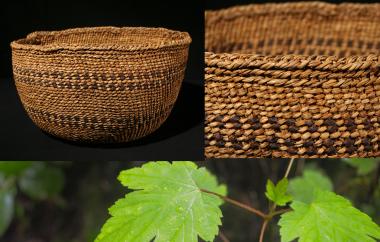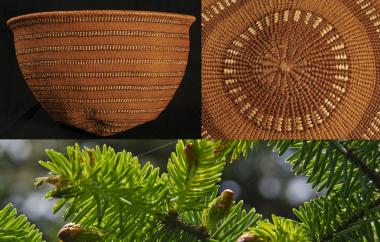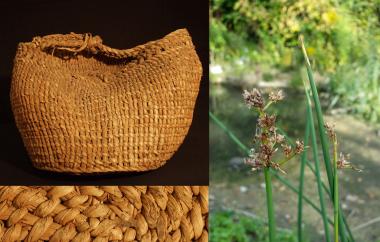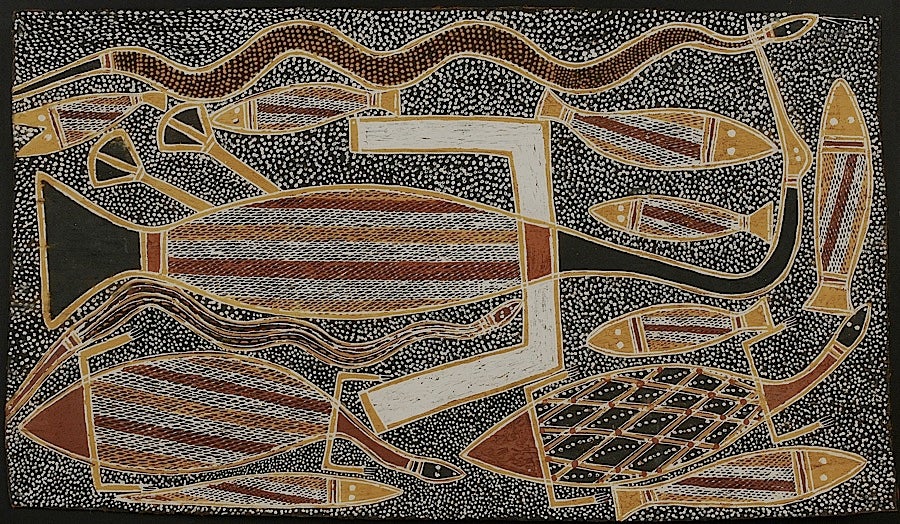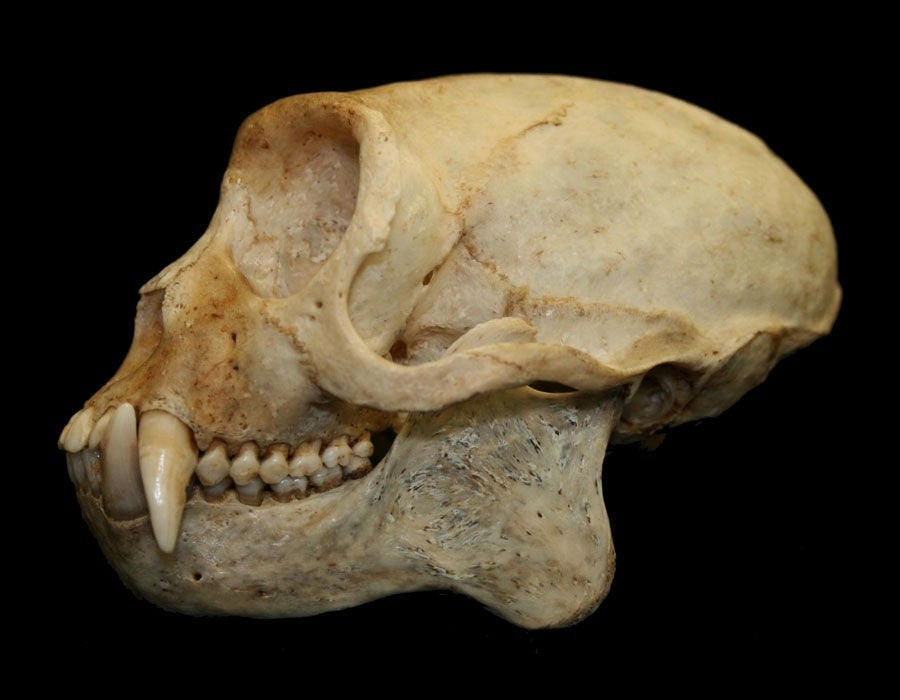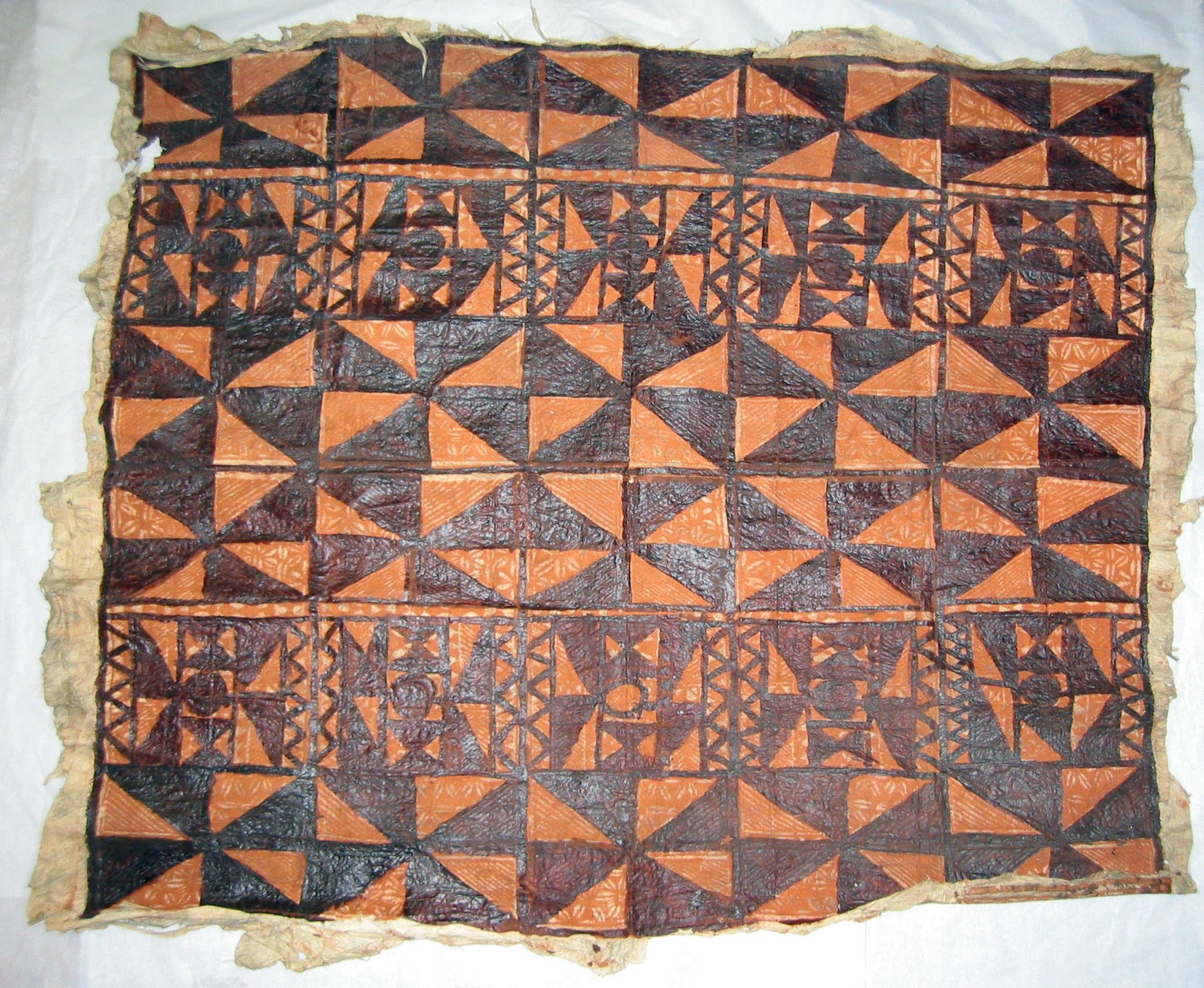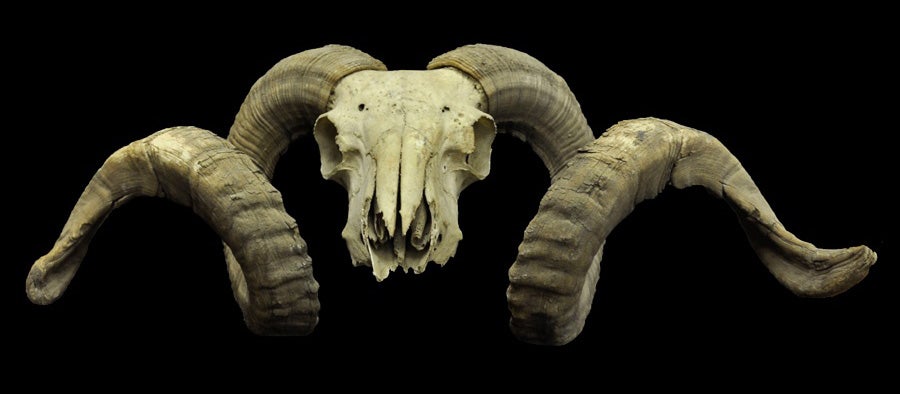Basketry from the museum’s collections is a rich resource for learning about native plants used in weaving as well as the traditional ecological knowledge of Oregon’s contemporary weavers and Tribal members.
The basket making process begins with the gathering and preparation of plants to create different weaving elements. Though they grow in the wild, many of these culturally important plants are modified through traditional practices that enhance their growth and productivity—practices such as burning, pruning, coppicing (cutting down to the ground), soil tilling, and the removal of competing vegetation and rocks. Low-intensity controlled fires, for example, encourage the new growth of desirable grasses and berries and help remove unwanted vegetation. The pruning and or burning of plants like hazel and willow encourages the growth of the long, straight shoots preferred by basket makers, while the removal of rocks and other obstructions from the soil produces straighter, finer roots.
Basket makers select plants based on the form and design they are looking to create. The inner bast fibers, or phloem, of stinging nettle (Urtica dioica), milkweed (Asclepias), and dogbane (Apocynum), are commonly used for cordage warps in flexible, twined bags from the Columbia Plateau and in Klamath hats. Rigid baskets from Western Oregon are often made with hazel stick (Corylus) warps and spruce root (Picea) wefts. Designs are created by dyeing plant materials or porcupine quills with such substances as mud, ochre, wolf lichen (Letharia vulpine), berries, alder bark (Alnus), and Oregon grape (Mahonia aquifolium). Bear grass (Xerophyllum tenax) is often used as an effective decorative material with its naturally bright white coloring, and maidenhair fern stems may be used for contrasting dark designs.
While contemporary weavers continue to use native plants such as sweetgrass sedge (Schoenoplectus pungens) and rush (Juncus), they also work with a variety of other materials. In fact, commercially made materials such as wool, raffia, linen, cotton, and synthetic aniline dyes began to appear in Native American basketry by the late 1800s, when such materials became readily available and were often repurposed from clothing, blankets, and string. The integration of new material with native plants during this time points to the artistic innovations of weavers and to changing sociopolitical landscapes. Access to native plant gathering areas was significantly reduced during the reservation era of the mid-1800s. These changes, coupled with increasing demand from the tourist market during the 1880s to 1930s, led many traditional weavers to introduce new materials into their designs and technology.
In Oregon basket making, commonly used native plants include wetland species such as tule (Schoenoplectus), cattail (Typha), sedge (Cyperacae), and reed or cane (Phragmites communis). Bark and root materials often come from western red cedar (Thuja plicata), cherry (Prunus), maple (Acer), and spruce. Hazel, cottonwood (Populus), and willow (Salix) provide rigid sticks, while dogbane, stinging nettle, and milkweed provide more flexible fiber. Bear grass, sea grass (Phyllospadix), rush, maidenhair fern (Adiantum), and Woodwardia fern (Woodwardia) also appear in the region’s traditional basketry. Explore the gallery to find examples of all of these plants woven into Oregon’s ethnographic basketry.
Images © UO Museum of Natural and Cultural History. Production of this gallery was generously supported by the MNCH Sandal Society.
Further reading:
Anderson, Kat
2005 Tending the Wild: Native American Knowledge and the Management of California's Natural Resources. Berkeley: University of California Press.
Deur, Doug, and Nancy Turner (editors)
2005 Keeping It Living: Traditions of Plant Use and Cultivation on the Northwest Coast of North America. Seattle: University of Washington Press.
Fowler, Catherine, and Dana Lepofsky
2011 Traditional Resource and Environmental Management. In Ethnobiology, edited by E. N. Anderson, D. Pearsall, E. Hunn, and N. Turner, pp. 285–304. Oxford: Wiley-Blackwell Press.
Phillips, P. W.
2016 Ethnobotany of the Coos, Lower Umpqua, and Siuslaw Indians. Corvallis: Oregon State University Press.
Cat. #1-810
Twined basket, Siletz Reservation, received 1922. Rush, bear grass, and deer fern.
Detail and plant pictured: Common rush (Juncus sp.) warp and weft.
Cat. #1-9800
Twined basket, Coquille, received 1936. Spruce root, hazel sticks, cedar bark, bear grass, and possible maple bark.
Detail and plant pictured: Diamond checkered overlay in white bear grass (Xerophyllum tenax).
Cat. #1-12030
Twined basket, Siletz Reservation, received 1943. Hazel sticks, spruce root, bear grass, and maidenhair fern.
Detail and plant pictured: Checkered bands in dark maidenhair fern (Adiantum sp., pictured) and white bear grass.
Cat. #1-12713
Twined basket, Clatsop, collected 1902. Cedar bark warp and weft.
Detail and plant pictured: Vertical bands of bear grass with horizontal bands of mud-dyed Western red cedar bark (Thuja plicata, pictured).
Cat. #1-15604
Twined hat, Klamath, collected 1896. Tule, dogbane, stinging nettle, split reed or cane, porcupine quills dyed yellow with wolf lichen.
Detail and plant pictured: Dogbane (Apocynum sp.) cordage start.
Cat. #1-15605
Twined hat, Klamath, collected 1899. Tule, stinging nettle, reed or cane, and porcupine quills dyed yellow with wolf lichen.
Detail and plant pictured: Cordage start of stinging nettle bast fibers (Urtica dioica).
Cat. #2-1247
Flat twined bag, Columbia Plateau, received 1936. Dogbane, milkweed, commercial hemp or linen, corn husk, and black wool.
Detail and plant pictured: Milkweed (Asclepsias sp.) bast fiber weft mixed with commercial hemp or linen.
Cat. #2-1326
Twined, jar-shaped basket, Northern Paiute, received 1936. Willow body, side loops in dogbane cordage.
Detail and plant pictured: Willow (Salix sp.) warp and weft.
Cat. #2-3123
Twined Hat, Shasta, received 1938. Hazel sticks, willow root, spruce root, bear grass, Woodwardia fern, and maidenhair fern.
Detail and plant pictured: Woodwardia fern (Woodwardia sp., pictured) filaments dyed red with alder bark.
Cat. #2-18215
Twined basket, Clatsop, ca. 1900. Sweetgrass sedge, sea grass, and bear grass.
Detail and plant pictured: Sea grass (Phyllospadix sp.) in dark brown.
Cat. #1-825
Open twined basket, Grand Ronde Reservation, collected 1897. Hazel sticks, spruce root.
Detail and plant pictured: Vertical band in mud-dyed hazel (Corylus sp.) sticks.
Cat. #1-902
Cylindrical twined bag, Wasco/Wishram, received 1936. Commercial sisal twine, cotton mailing twine, and cattail.
Detail and plant pictured: Designs in dark-dyed cattail (Typha sp., pictured) with white corn husk background.
Cat. #1-2485
Twined basket, Kalapuya or Upper Umpqua, received 1937. Juncus rush and maple bark.
Detail and plant pictured: Checkered band in dark-dyed maple (Acer sp.) bark.
Cat. #1-9774
Twined basket, Coos, received 1936. Spruce root and bear grass.
Detail and plant pictured: Sitka spruce root warp and weft, dark design bands in mud-dyed spruce root (Picea sitchensis).
Cat. #1-6792
Twined basket, Klamath, received 1938. Tule warp and weft.
Detail and plant pictured: Whole tule (Schoenoplectus sp.) stems.
